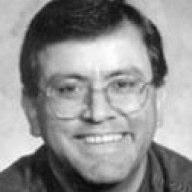
- This event has passed.
Fifth Generation (5G) Cellular Wireless: Vision, Goals, and Challenges
12 October 2016 @ 18:00 - 21:00
Speaker: Prof. Ender Ayanoglu
Electrical Engineering and Computer Science
The Henry Samueli School of Engineering
University of California, Irvine
Date: Wednesday, Oct 12, 2016
Time:
Social Hour: 6:00 p.m.
Dinner: 6:30 p.m.
Presentation: 7:15 p.m.
Location:
The Doubletree Club Orange County Airport
7 Hutton Centre Drive,
Santa Ana, CA, 92707-5794
714-751-2400
Cost: First 10 early-birds (first-come-first-serve) are free! After that, $20 for non-members with dinner, $10 for IEEE members with dinner, $5 for student-members with dinner, free for presentation only
Abstract:
Cellular wireless or mobile communications have seen four generations of technological developments. Starting with analog voice with the first, and then moving on to digital voice with the second generation, these generations were each marked with a clear technological advancement. For the third generation, the advancement was in incorporating data on top of a voice-based infrastructure. With the fourth generation, every service was converted into data format, or packetized transmissions, including voice and video. Today, technologists are proposing a fifth generation for around the time frame of 2020. Most consider this time to be when the infrastructure will need to be renewed. Together with this observation, it is usually argued that the new generation technology should possess a number of features. Yet, there is really no consensus on what these new features should be. Some argue that we are facing a new generation of devices that will have continuous Internet connectivity, and with that there will be more machine to-machine or machine-type communications. It is further argued that, as a result, new communication protocols should be able to support the new formats of communication that this change will require. For example, it is argued that machine-type communication will require very low latency. Others argue that the demand for services will increase by about three orders of magnitude and the new technology should be designed to support this tremendous increase, perhaps handling each order of magnitude by means of a different approach. Yet, there are others who argue that the current communications infrastructure is highly energy-inefficient and the fifth generation should be designed to solve this problem, by increasing energy efficiency by several orders of magnitude. In this talk, we will discuss the pros and cons of the approaches for defining and realizing the fifth generation cellular wireless technologies as seen today. We will discuss what fifth generation can be expected to be and, more importantly, what it cannot be. The goal in this presentation is to address both the very high expectations and the realities.
Speaker Biography:
Dr. Ender Ayanoglu received his Ph.D. degree from Stanford University, Stanford, CA in 1986 in electrical engineering. He was with the Communications Systems Research Laboratory, Holmdel, NJ, part of AT&T Bell Laboratories until 1996, and Bell Labs, Lucent Technologies from 1996 until 1999. During 1999-2002, he was a Systems Architect at Cisco Systems, Inc., San Jose, CA. Since 2002, he has been a Professor in the Department of Electrical Engineering and Computer Science, University of California, Irvine, Irvine, CA, where he served as the Director of the Center for Pervasive Communications and Computing and held the Conexant-Broadcom Endowed Chair during 2002-2010.
His past accomplishments include invention of the 56K modems, characterization of wavelength conversion gain in Wavelength Division Multiplexed (WDM) systems, and diversity coding. 56K modems broke what was believed to be the “Shannon limit” of about 36 kb/s for voiceband modems. Since every laptop computer includes one, the number of implementations of 56K modems is estimated to be in the hundreds of millions or even billions. His work on wavelength conversion gain in WDM networks showed large gains can be achieved via better wavelength selection and routing algorithms without the need for optical wavelength converters. And, diversity coding is a technique for link failure recovery in communication networks employing erasure coding introduced in 1990, prior to the publication of the first papers on network coding. During 2000-2001, Dr. Ayanoglu served as the founding chair of the IEEE-ISTO Broadband Wireless Internet Forum (BWIF), an industry standards organization which developed and built a broadband wireless system employing Orthogonal Frequency Division Multiplexing
(OFDM) and a Medium Access Control (MAC) algorithm that provides Quality-of-Service (QoS) guarantees. This system is the precursor of today’s Fourth Generation (4G) cellular wireless systems such as WiMAX, LTE, and LTE-Advanced.
From 1990 to 2002, Dr. Ayanoglu served on the Executive Committee of the IEEE Communications Society Communication Theory Committee, and from 1999 to 2001, was its Chair. From 1993 until 2014 Dr. Ayanoglu was an Editor, and since January 2014 is a Senior Editor of the IEEE Transactions on Communications. He served as the Editor-in-Chief of the IEEE Transactions on Communications from 2004 to 2008. Since December 2014, he is serving as the Editor-in-Chief of IEEE Journal on Selected Areas in Communications – Series on Green Communications and Networking. He led the efforts to convert this series into an IEEE journal, and since June 2016, he is serving as the founding Editor-in-Chief of the new journal IEEE Transactions on Green Communications and Networking.
Dr. Ayanoglu is the recipient of the IEEE Communications Society Stephen O. Rice Prize Paper Award in 1995 and the IEEE Communications Society Best Tutorial Paper Award in 1997. He received the IEEE Communications Society Communication Theory Technical Committee Outstanding Service Award in 2014. He has been an IEEE Fellow since 1998.
Questions:
Dr. Lan Nguyen
IEEE OC ComSig Chapter Chair
lan.nguyen@linquest.com


